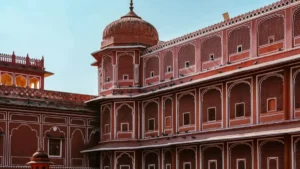The majestic Ram Temple in Ayodhya, set to be inaugurated on Jan 22, is a marvel that blends traditional Indian heritage with modern scientific techniques. Designed by the renowned architect Chandrakant B Sompura and his son Ashish, the temple stands proudly on 2.7 acres of land in the historic temple town.
Who Designed the Ayodhya Ram Mandir?
Chandrakant Sompura, the chief architect of the Ayodhya Ram Mandir, hails from a distinguished lineage of temple architects based in Ahmedabad. With a family legacy spanning over several generations, the Sompuras have left an indelible mark on Indian temple architecture, having designed and built more than 200 temples. Notable among their creations are iconic structures like the Somnath Temple in Gujarat, the Swaminarayan temple in Mumbai, the Akshardham temple complex in Gujarat, and the Birla Temple in Kolkata.
Ayodhya Ram Mandir Design, the Essence of Nagara Architecture
The Ayodhya Ram Mandir is a living testament to the magnificence of Nagara architecture, a style that traces its roots back to the fifth century. The intricate carvings, majestic spires, and sacred sanctums of the temple pay homage to India’s cultural and religious diversity. The design reflects the essence of Lord Ram’s revered abode, creating a harmonious blend of spirituality and architectural brilliance.
Chandrakant Sompura’s Legacy as Chief Architect of the Ram Mandir
As the grand consecration ceremony approaches, the name Chandrakant Sompura is set to be etched into the pages of Indian history. His dedication and expertise as the chief architect of the Ayodhya Ram Mandir have brought forth a divine structure that transcends architectural boundaries. The culmination of his vision promises not only a sacred place of worship but also a symbol of unity, cultural pride, and enduring faith that resonates across the diverse tapestry of India.
Architectural Dimension of Ram Mandir Temple of Ayodhya
- Dimensions: The temple is an impressive structure, standing 161 feet tall, 235 feet wide, and with a total length of 360 feet. It encompasses a built-up area of nearly 57,000 square feet.
- Architectural Style: Following the Nagara style, one of the distinguished temple-building styles from ancient India, the temple meticulously adheres to Vedic rituals while incorporating modern technology.
Features of Ram Mandir Temple
- Three Floors: The temple is a three-floor structure, and the height is about 70% of the iconic Qutab Minar.
- Sanctum Sanctorum: The most sacred part, ‘garbha griha,’ is situated on a raised plinth, adorned with the tallest shikhara resembling a mountain peak.
- Shikharas and Pillars: Five shikharas are constructed over five mandapas, with 300 pillars across the mandapas, creating an intricate and awe-inspiring design.
- Artistic Details: The temple’s interior is adorned with Makrana marble, the same stone used in the construction of the Taj Mahal.
Construction Techniques of Ram Mandir
- Traditional Materials: The temple is built using granite, sandstone, and marble, adhering to the Nagara style that emerged during the Gupta Period.
- No Cement or Mortar: Notably, no cement or mortar was used in its construction, ensuring longevity.
- Durability: Instead of steel or iron, the temple incorporates a lock and key mechanism with a mix of granite and sandstone, providing a lifespan of up to 1,000 years.
Ram Mandir Ayodhya – Scientific Contributions
- Engineering Excellence: The construction involved top Indian scientists, with Pradeep Kumar Ramancharla, the director of the Central Building Research Institute (CBRI), actively contributing to the project.
- ISRO Technologies: The temple incorporates technologies from the Indian Space Research Organisation (ISRO), showcasing a fusion of traditional architecture and modern scientific advancements.
- Innovative Ceremony: A special ‘Surya Tilak’ mirror, designed by scientists from CBRI and the Indian Institute of Astrophysics (IIA), will be used for the ceremonial anointment of Lord Ram on every Ram Navami day at noon, utilizing sunlight.





 Exploring Bondi Beach: Sun, Surf and Syd...
Exploring Bondi Beach: Sun, Surf and Syd...
 Chakrashila Wildlife Sanctuary: Location...
Chakrashila Wildlife Sanctuary: Location...
 Top-7 Oldest Palaces in India, Check the...
Top-7 Oldest Palaces in India, Check the...







